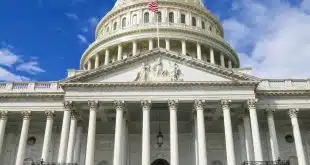Popular with billers, but less so with consumers, electronic bill payment and presentment is enjoying a new lease on life thanks to mobile users.
Since its introduction more than a decade ago, electronic bill presentment has been popular with billers eager to take advantage of the cost savings the technology provides. Consumers, on the other hand, have been less enthusiastic.
Some 69% of billers in the United States offered electronic billing in 2016, up a bit from two-thirds in 2015, and another 11% had a solution in development, says London-based Ovum Consulting. But e-bills accounted for just 45% of the 14.7 billion bills paid in the United States in 2016, according to Boston-based Aite Group. That leaves 55% of bills still presented in paper form.
E-bills are online versions of paper bills that consumers receive by email or can view through a biller’s or a bank’s Web site.
By contrast, consumers are more inclined to take advantage of electronic bill payment than e-billing. In 2016, online bill payment achieved a tipping point, accounting for 56% of consumer bills paid, up from 47% in 2013, Aite Group says.
Why the imbalance between consumer acceptance for e-bill presentment and e-bill payment? For one thing, the benefits of e-billing are clear for billers—a savings of 50 cents to 75 cents for each bill, on average—but less so for consumers. The primary advantages to consumers include convenience and environmental friendliness, but billers have not done a particularly good job touting these upsides.
No Details, Please
Now, though, signs are emerging that e-bill presentment is finally catching on with consumers. The reason: mobility. The mobile generation, primarily the fabled Millennials, demonstrate a strong preference for viewing and paying their bills on mobile devices. That is prompting billers and electronic bill presentment and payment (EBPP) technology providers to create new ways of putting e-bills in front of mobile users.
At the same time, some billers at least are improving their marketing of EBPP and making it easier for consumers to enroll in the service.
“Millennials are digital by nature, so e-billing is a natural for them,” says Sheri Chin, vice president for global sales marketing at ACI Worldwide Inc., a Naples, Fla.-based provider of electronic payment and banking solutions, which sponsored the Ovum report. “Most organizations have yet to make their electronic bills better than paper bills, but we’re seeing that change with leading organizations delivering mobile-optimized e-bills with videos and interactive content not available on paper bills.”
The nominal appeal of EBPP to mobile users isn’t hard to grasp. It includes convenience, ease of use and anytime, anywhere access to bills, with the ability to pay them on the go. Working with small screens, mobile EBPP users are more interested in seeing the amount owed and due date than in viewing the details of the billing statement.
“The vast majority of consumers who receive statements electronically (on their mobile devices) never actually look at their detailed statement,” says Justin Jackson, vice president for integrated payment solutions and bill payment in the digital banking group at Fiserv Inc., a bill-payment technology vendor. “Instead, they will only consider the bill’s summary data—amount due, account balance, and due date—when making their payment.”
Recent survey data from Fiserv supports those assertions: 81% of consumers cited convenience, 73% ease of use, and 67% ‘anywhere’ access as the reason for using mobile-banking services. In addition, 53% of users specifically cited the ability to pay bills anywhere, anytime as a reason for using mobile banking.
Friendly Payment
Billers’ drive to make it simpler for mobile users to view a bill is also prompting them to make it easier to pay using a mobile device when receiving an e-bill (box, page 44).
“Prior to today’s smart-phone environment, e-bill messaging in a cost-effective way really wasn’t possible,” says Jackson. “A push-notification reminder that a bill due in two days hasn’t been paid is a way to provide real value to a consumer.”
Fidelity National Information Services Inc., known as FIS, a Jacksonville, Fla.-based financial services processor, is developing an application that pushes billing alerts to consumers via text messages. The message is a reminder that the due date is approaching and includes a link consumers can tap on their phone’s screen to pay the bill. Consumers are shown the amount to be paid prior to tapping the payment button.
Consumers will also have the option, after receiving the alert, to log onto the biller’s Web site and pay an alternative amount, such as a minimum balance, if applicable.
To receive alerts from billers, consumers must enroll in the service, which includes designating a method for paying the bill, such as a checking or savings account or credit or debit card. Offering multiple payment options is expected to increase adoption of e-billing alerts, since consumers often pay their bills using multiple methods, payment experts say.
“E-billing is a valuable service, but how many mobile users are going to manipulate their screen to improve viewing?” asks Norman Marraccini, director of digital payments products, strategy and marketing for FIS. “That’s what makes e-bill messaging effective.”
Once FIS’s e-bill messaging service rolls out, Marraccini says billers will be able track consumer payments and use that data to make future messages more compelling. One possibility is sending an e-bill message close to the day a consumer typically pays his bill each month.
Another feature of the service will allow consumers to designate autopayment for a bill when a billing alert is received. “This eliminates the need to open an e-bill and makes the entire EBPP process more convenient for mobile users,” says Johnny Moreland, director of business solutions for FIS. “The friendlier billers make payment through an e-bill by letting consumers choose the method they want to pay the bill, the better.”
Telcos on Top
Billers are also upping their investment in e-bill marketing, which has historically been uneven among billers, to increase consumer awareness of the technology.
The biggest culprit behind the inconsistent marketing of e-billing is customer-communications systems working independently of one another. Fifty-six percent of billers have disjointed communication platforms that hinder the marketing of e-billing to consumers, according to ACI.
“Having separate technology for composing the bill, delivering the bill, sending a text-message reminder, and receiving the payment prevents organizations from delivering consistent messages about the benefits of e-billing,” Chin says.
But now coordinating marketing efforts across all customer-communications channels is becoming a priority for billers, Chin adds.
One biller category that is aggressively marketing e-bills is telecommunications. The telcos’ efforts have been rewarded with strong adoption among Millennials. “The billers doing well with e-billing adoption are doing well with Millennials,” says David Albertazzi, a senior analyst for Aite Group.
Other biller segments where e-bill adoption is thriving include student loans, higher education, and credit card issuers, according to ACI. Lenders offering student loans and institutions of higher learning are seeing an adoption rate of 71%, while cell-phone providers have a 63% rate and major credit card issuers boast a 60% rate, Chin says.
Since billers that market e-bill services have adoption rates 25% higher than those that don’t, it behooves billers to promote the service through paper billing statements, on their Web site, and via email, says Chin.
ACI, for example, helps new EBPP customers develop marketing campaigns that promote e-billing in advance of the actual launch of the service. The goal is to make consumers aware that e-billing goes hand-in-hand with e-payment.
“We help develop campaigns that explain the advantages of e-billing to consumers and build anticipation around the service by counting down the days to the launch date,” Chin says. “Billers that have integrated their customer communications throughout the entire customer lifecycle, starting with initial account sign-up, have a seamless customer experience.”
Another effective tactic is to position e-billing to new customers as the only billing option. “One utility near a university tried this tactic with students living in off-campus housing with good results,” says Ed Bachelder, director of research for Boston-based Blueflame Consulting. “By not offering any other billing option, it’s easier for new customers to accept e-billing, because that’s all they know.”
Incentives can also move consumers to e-bills. These can include a gift or reward or the ability to donate a small amount, such as $5, to a favorite charity. “The idea is to get the customer to try e-billing and get comfortable with it,” Chin says. “Customers will likely continue receiving paper statements too, but move off them over time.”
If a consumer does not drop paper statements after trying e-bills, the biller can always offer another incentive, Chin says.
In addition to improved marketing, Bachelder says that many billers are removing a barrier to entry for e-billing by streamlining the enrollment process. “Requiring fewer steps to enroll lightens the burden for consumers,” Bachelder says. “With all the information billers have on their customers, they don’t need a lengthy enrollment form.”
Beyond Millennials
Use of the e-bill as a marketing tool is another new benefit that billers are discovering. E-bill marketing is similar to including statement stuffers in a paper bill. Instead, e-billers include marketing messages on the e-bill to cross-sell products or services, provide consumers with information that can reinforce brand affinity, or promote a business partner.
“An e-bill can serve as a marketing channel for targeted offers,” says Chin. “Credit card issuers could offer special financing options or billers can sell ad space to a business partner touting relevant services to the customer.”
Targeting offers to a consumer’s needs or preferences is not a big reach for billers, since they already have mounds of information about their customers. “A utility might want to build brand loyalty by providing tips for becoming more energy-efficient or show a consumer how his energy use compares to that of his neighbors,” Albertazzi says.
One drawback of such marketing messages is that they are less likely to appeal to mobile users, since they require opening a bill on the smart phone and reading it. That’s something mobile users are unlikely to do since they are more focused on the amount and due date, says Marraccini.
With e-billing catching on with mobile users, the more billers can do to reduce friction for viewing e-bills in general, and initiate real-time payment through an e-bill, the faster they can accelerate adoption across broader demographics, payment experts say.
“There has been a lot of improvement to e-billing and more is on the way,” Albertazzi says. “Consumers want to suppress paper and are realizing that billers electronically back up their billing statements, which alleviates their concerns of not having a back-up record of the billing statement. Billers that encourage consumers to migrate to e-billing now will reap the benefits of adoption later.”
By Saying, “Hey Siri,” RBC Mobile Users Can Pay Their Bills
E-billing alerts aren’t the only way EBPP technology providers are making it easier for mobile users to pay their bills electronically. Royal Bank of Canada recently upgraded its mobile-bank app to allow customers to pay their bills using Siri, Apple Inc.’s voice-activated, digital personal assistant for the iPhone.
RBC app users instruct Siri what bill to pay, saying, “Siri, pay my electric bill,” for example. Next, the customer tells Siri the amount to be paid and the date to send the payment. Payment details appear on the screen of the user’s phone for confirmation before the user provides final authorization of payment using Touch ID, a fingerprint sensor available on iPhones using Apple’s iOS 10.3 or higher. To turn on the service, consumers select the Siri option in the RBC app’s settings. RBC customers cannot receive or view their bills through the RBC app.
In addition to paying bills using Siri, RBC app users can make person-to-person transfers using Messages, Apple’s instant-messaging service. App users can send an Interac e-Transfer P2P payment through Messages without leaving their messaging window.
“By offering bill payments through Siri and P2P transfers through Messages, we’re providing another convenient solution to support our clients’ payment needs by giving them the ability to choose how they pay,” says Peter Tilton, senior vice president, digital, for RBC.
While RBC’s Siri bill-pay feature is a first for Canadian consumers, Sydney, Australia’s Tyro bank offers bill pay through Siri on its mobile app. The Siri bill-pay feature builds on Apple’s integration of Siri and Messages to payment applications, such as Square Cash. Mobile-app integration to Siri is made possible through SiriKit, a software development kit Apple introduced for iOS 10 in 2016. The kit provides app developers with the tools to send messages, place calls, make payments, and more, using Siri.
RBC believes that offering bill payments through Siri and P2P transfers through Messages will provide another customer convenience by giving them the option to choose how they pay, Tilton says.





